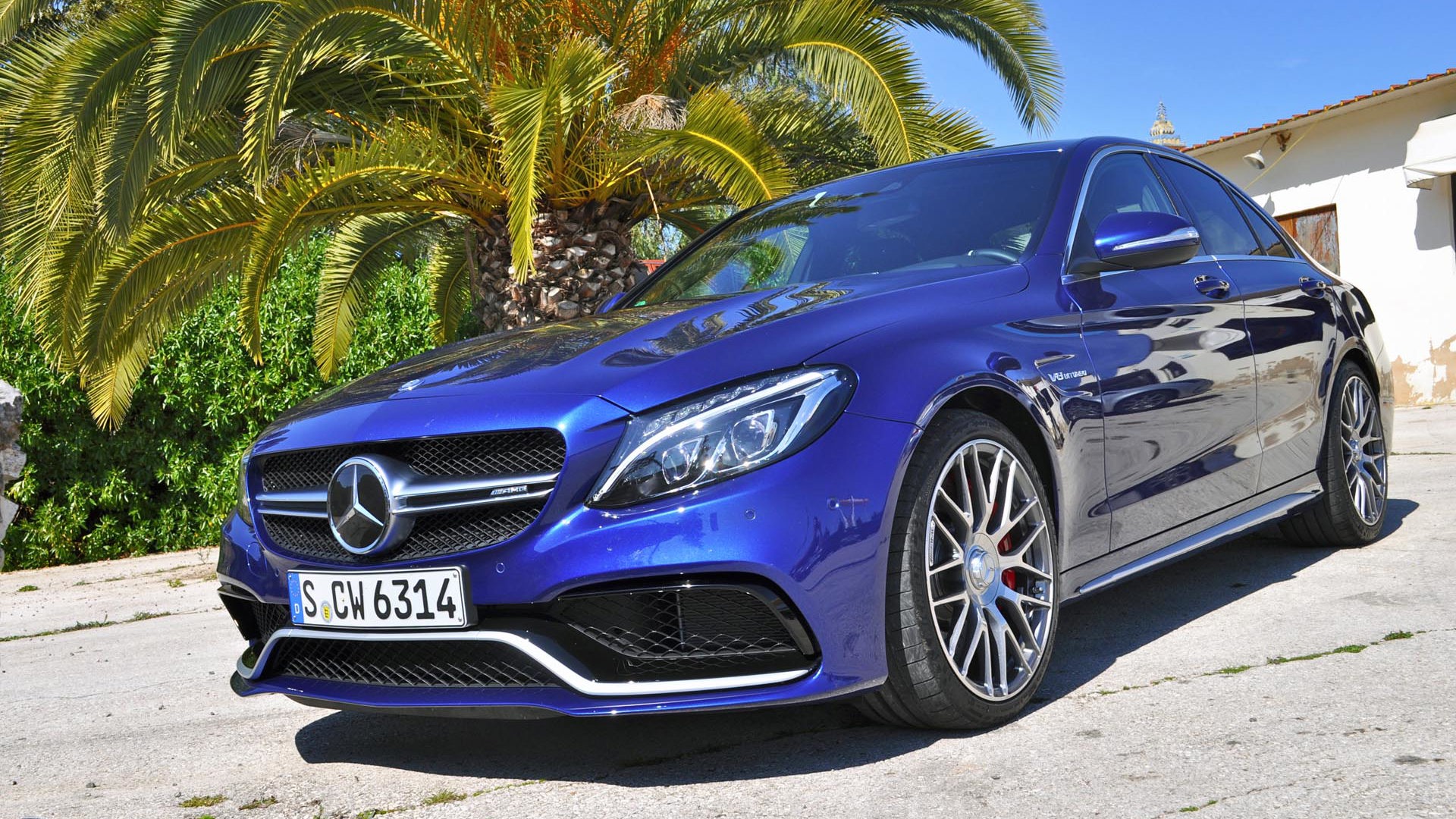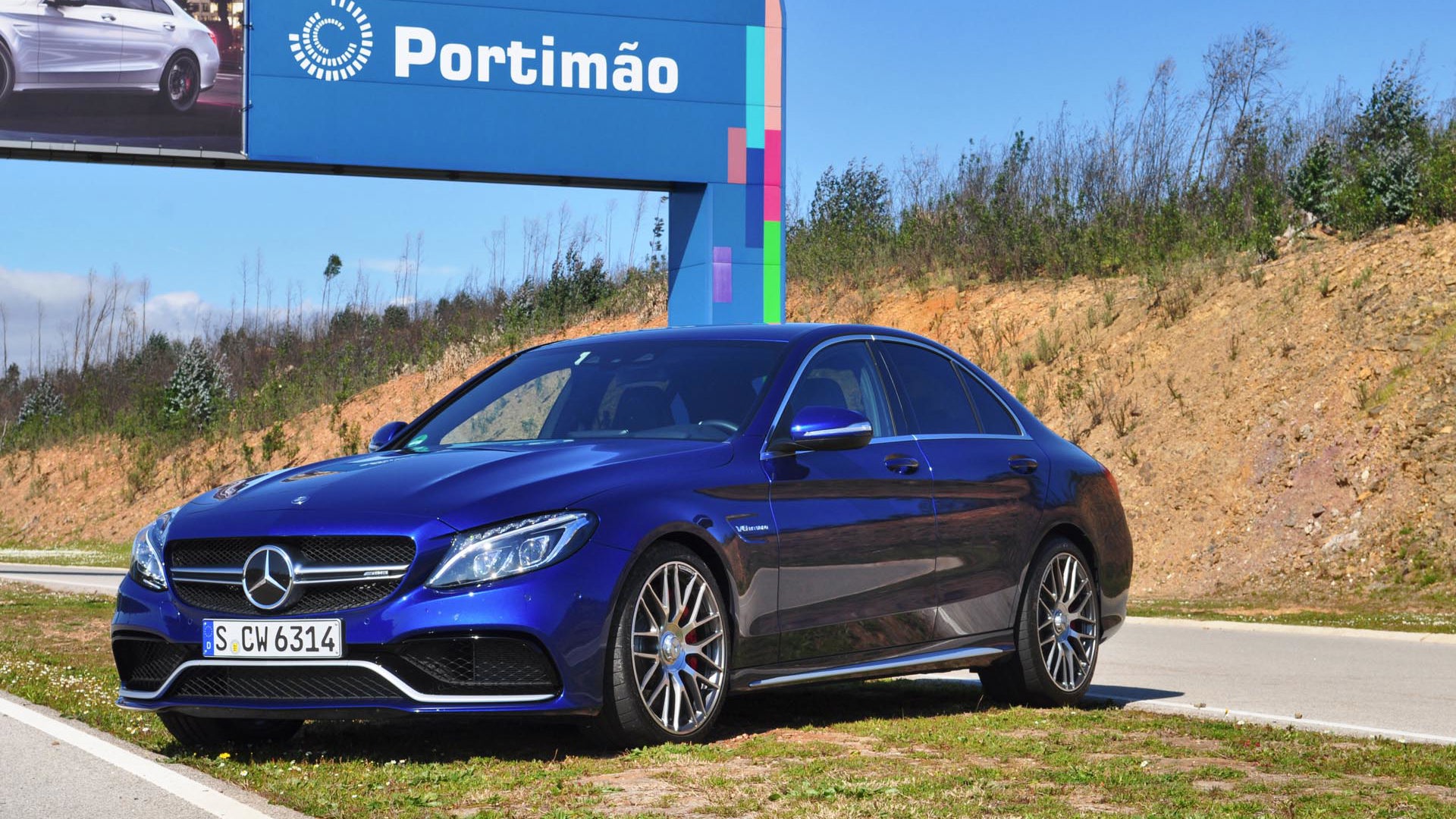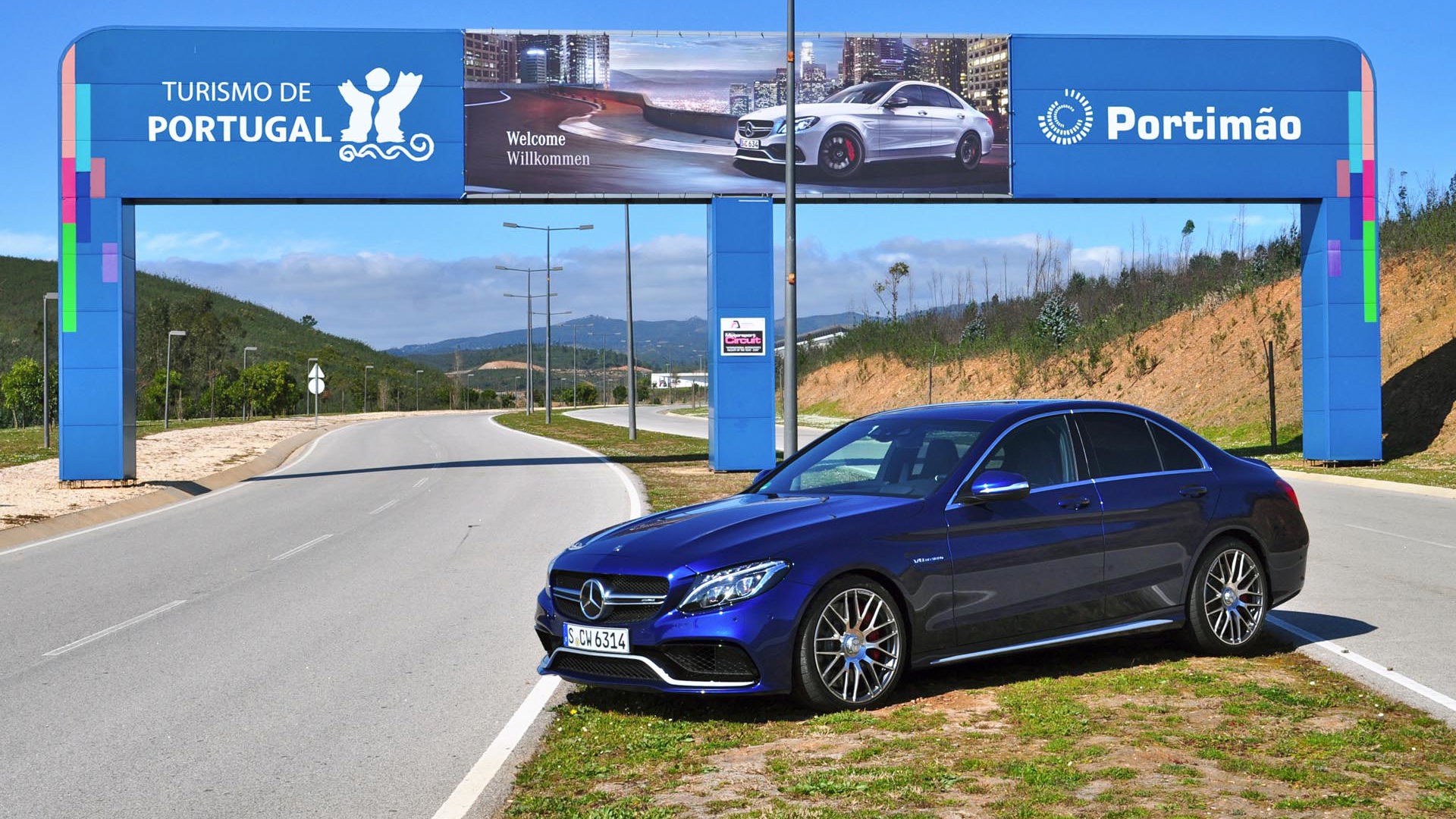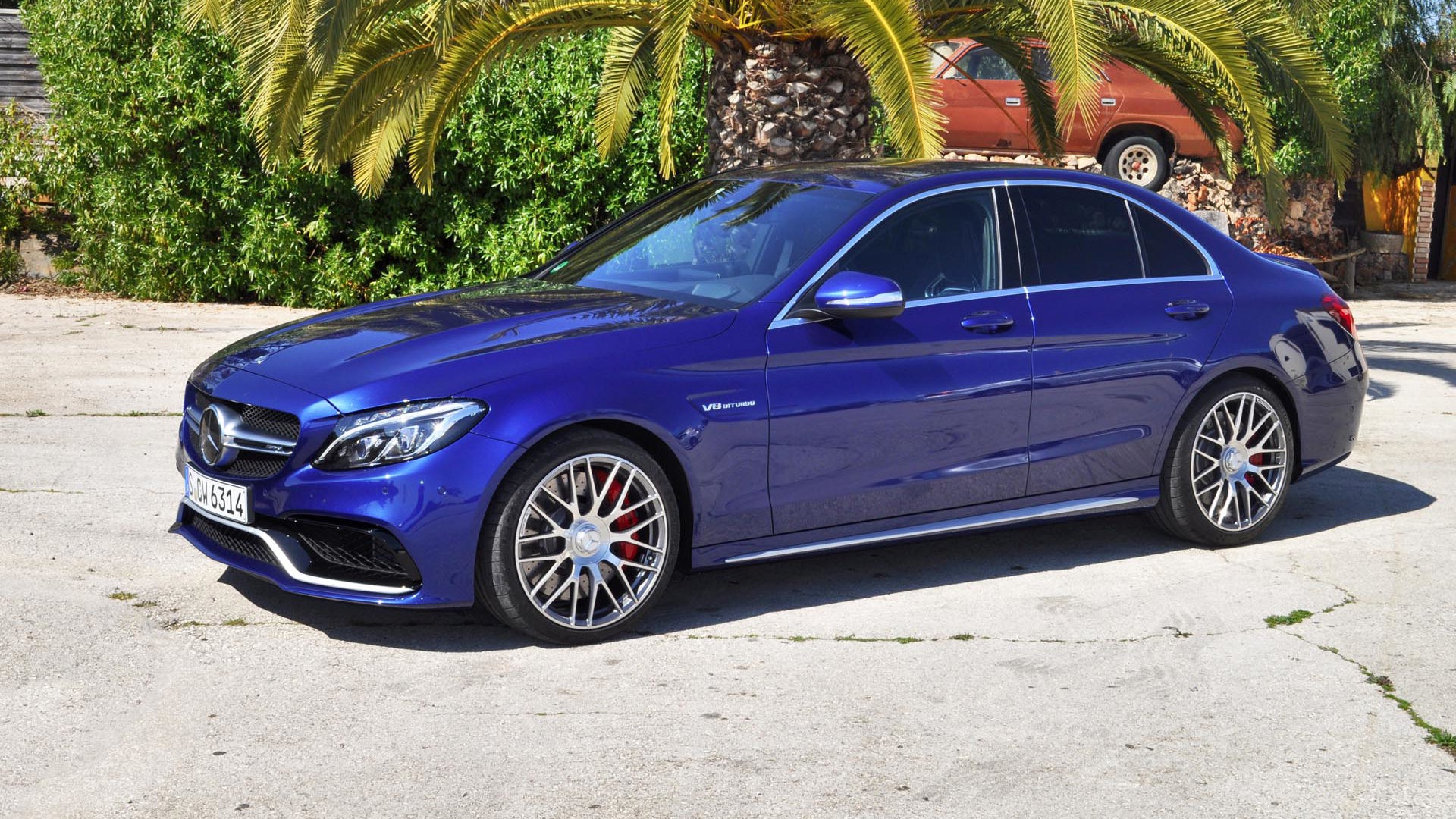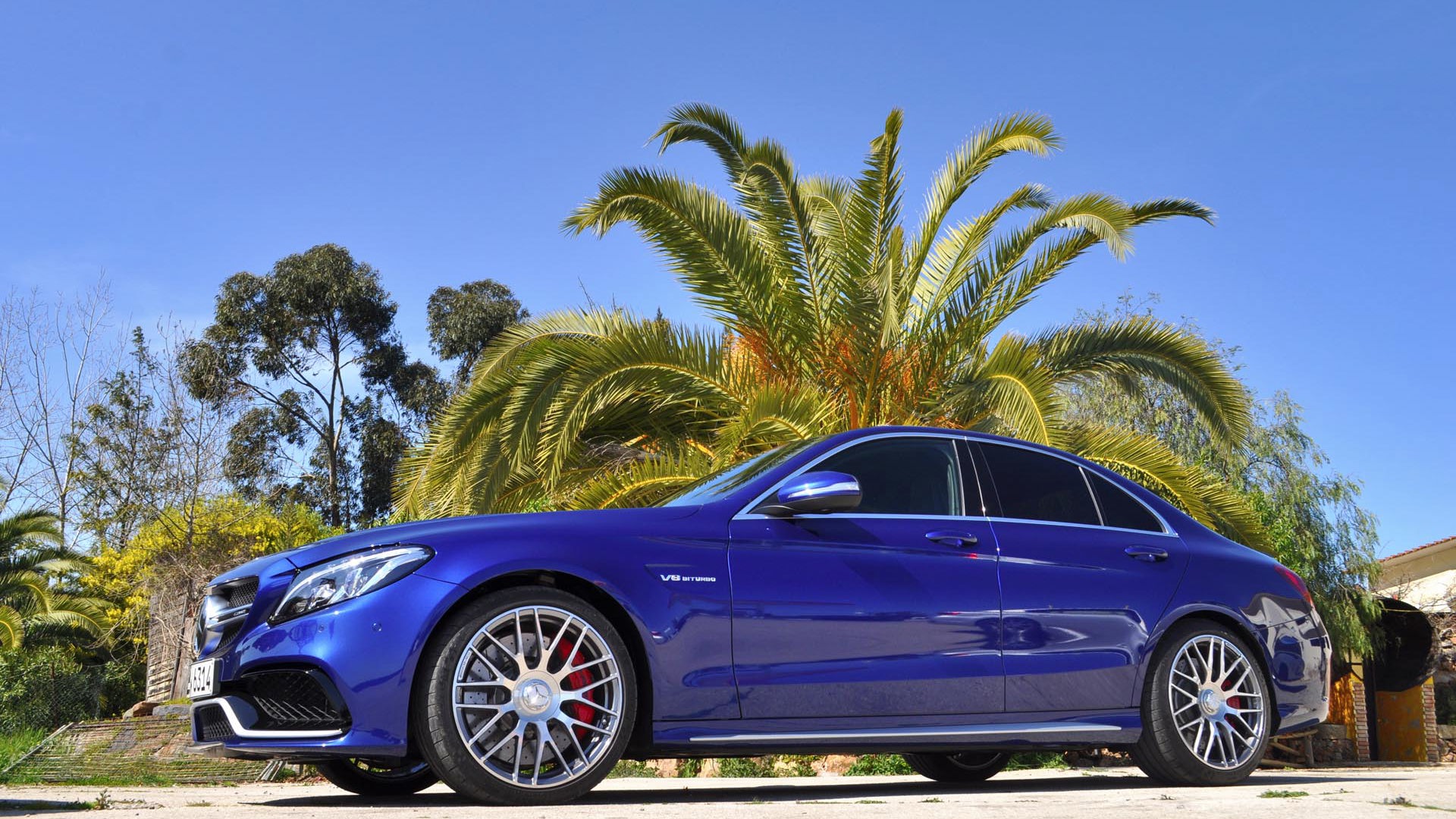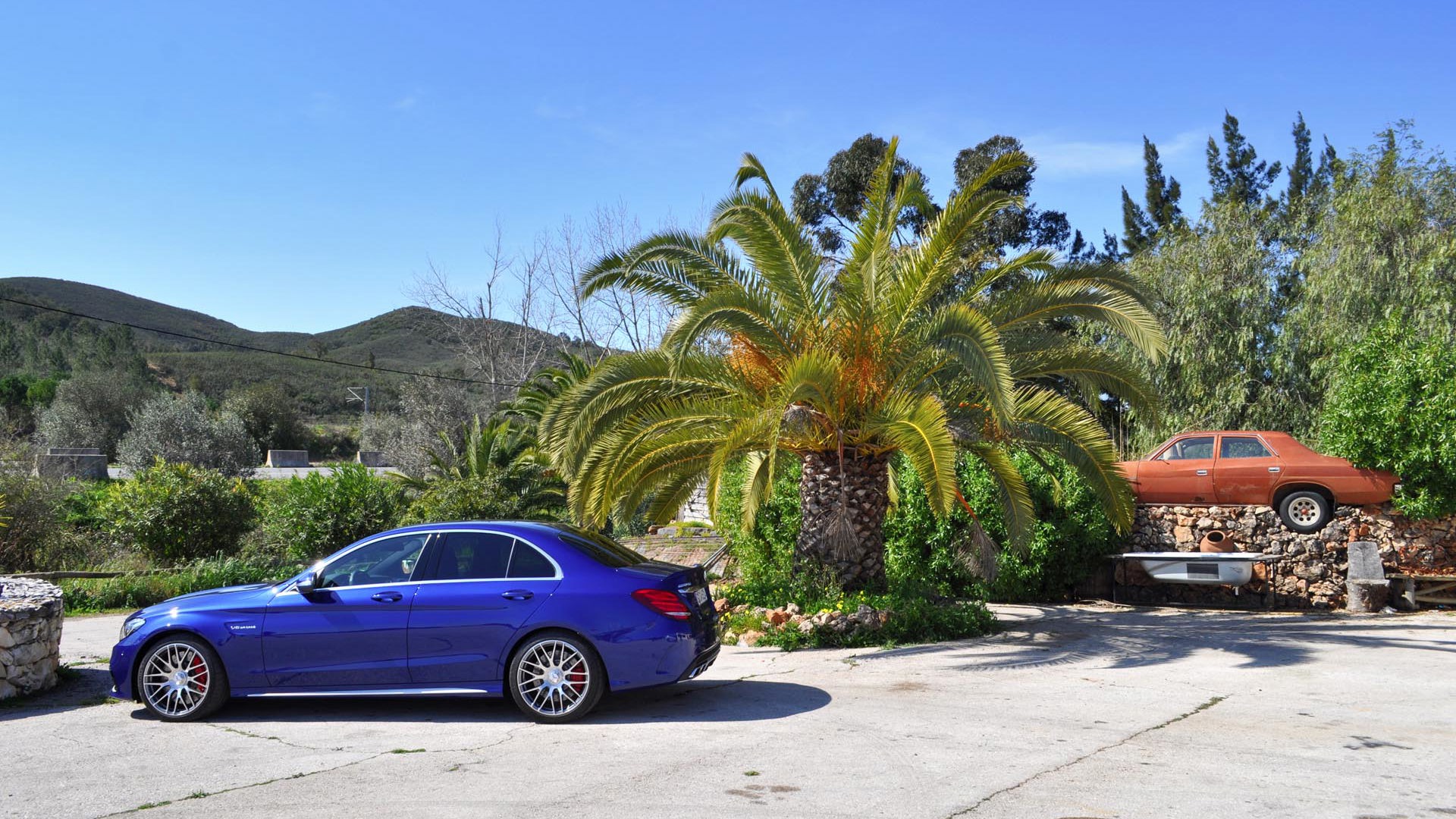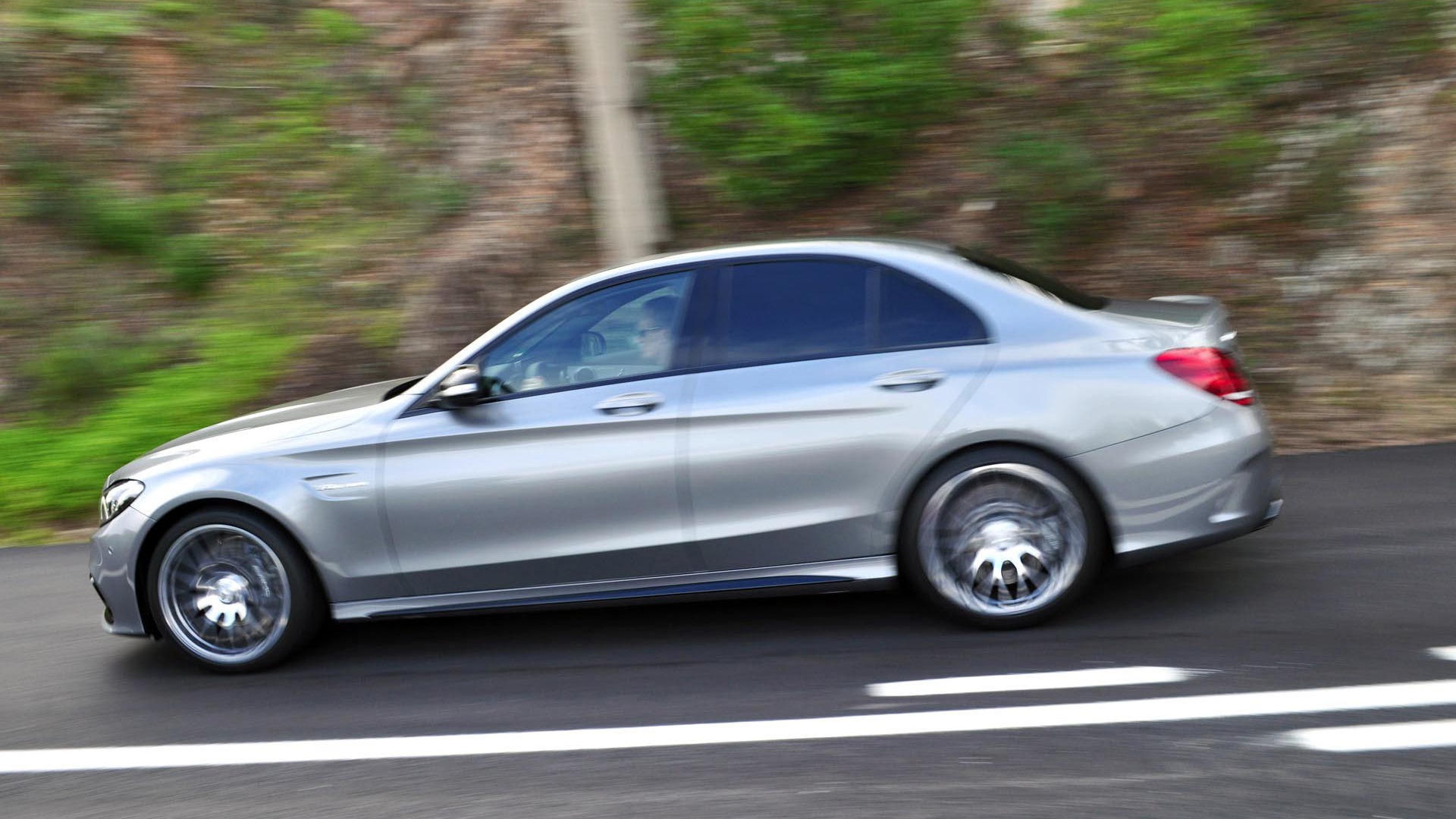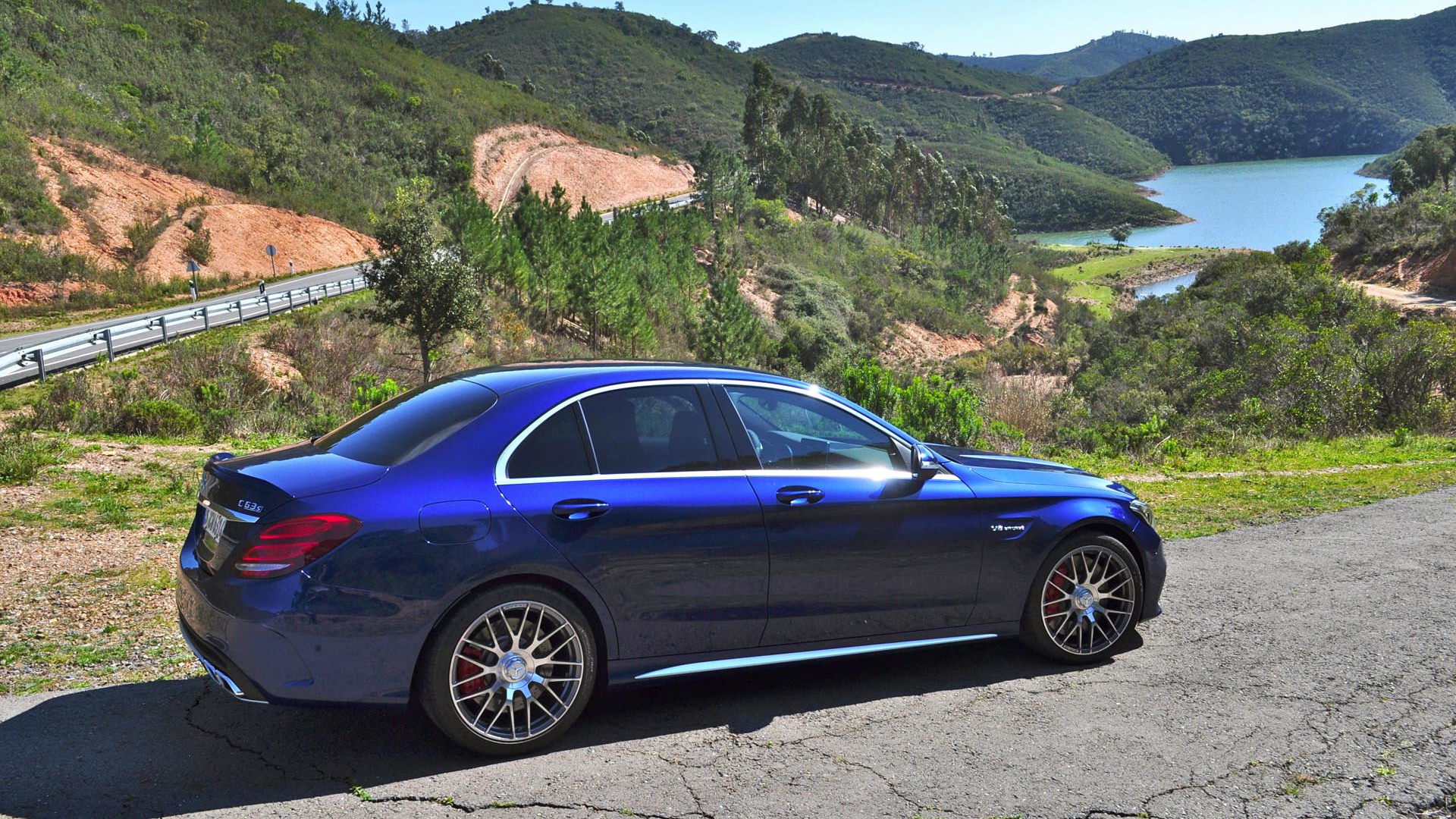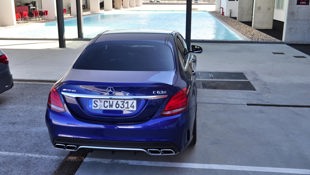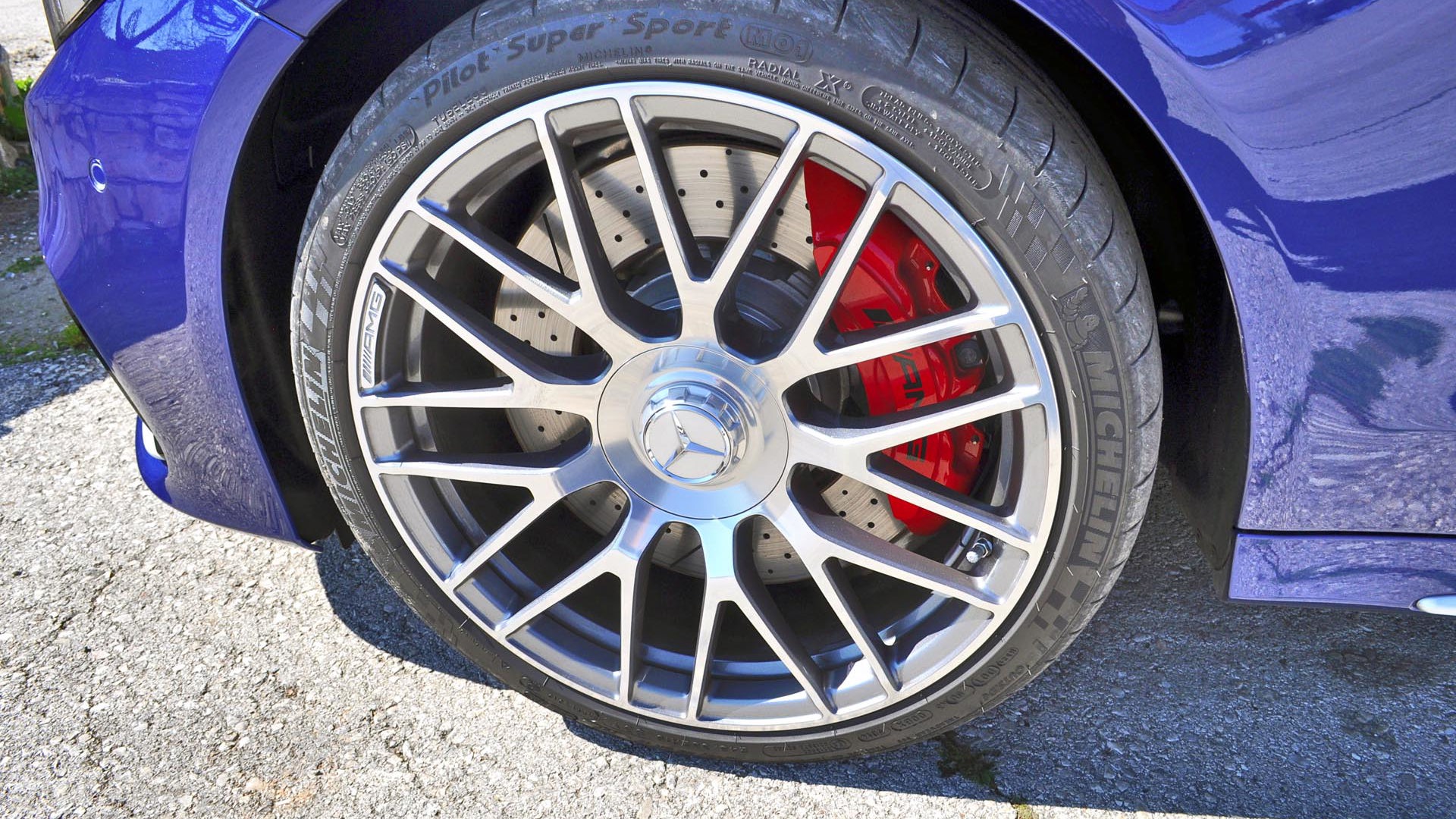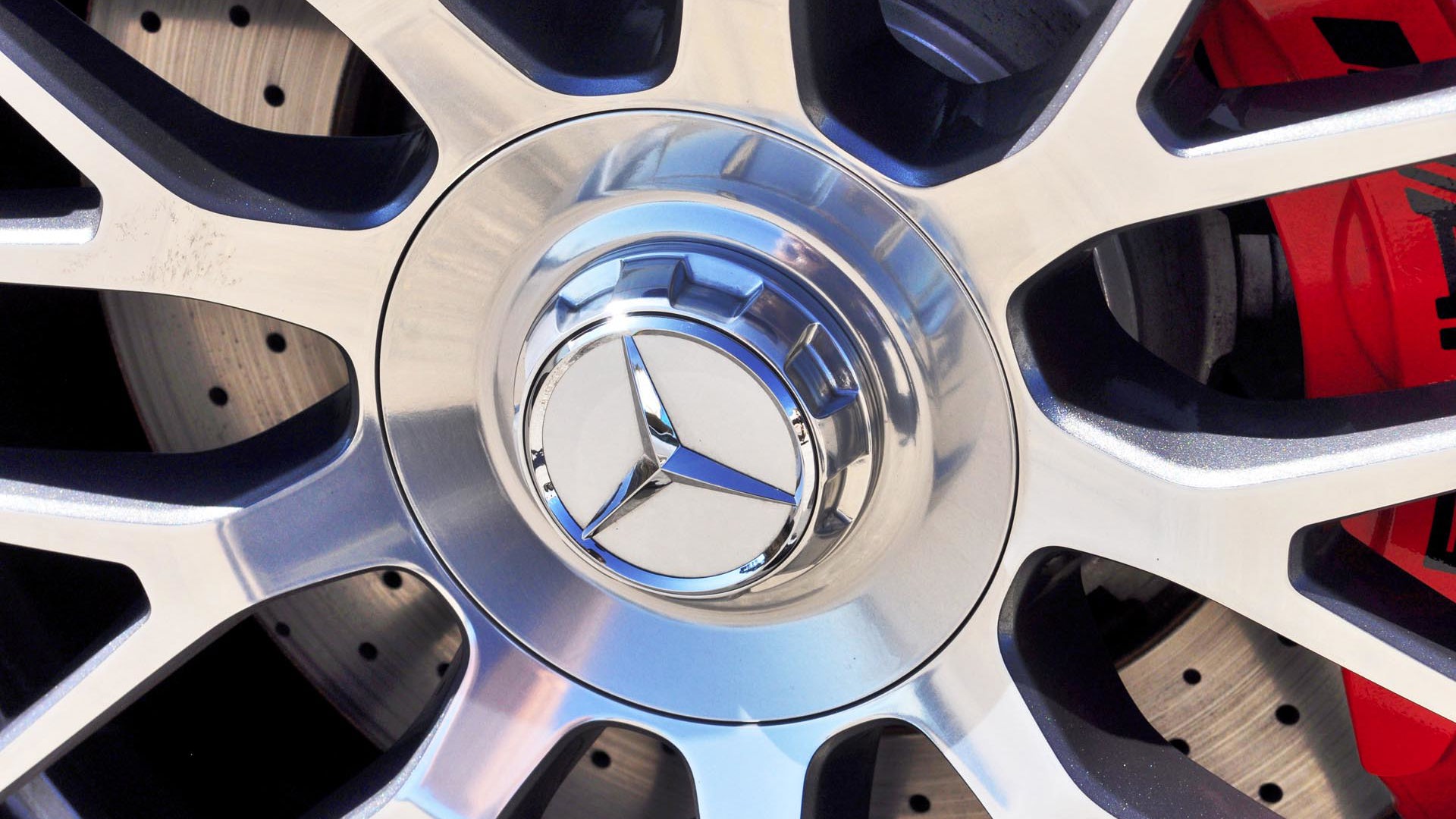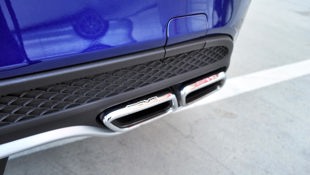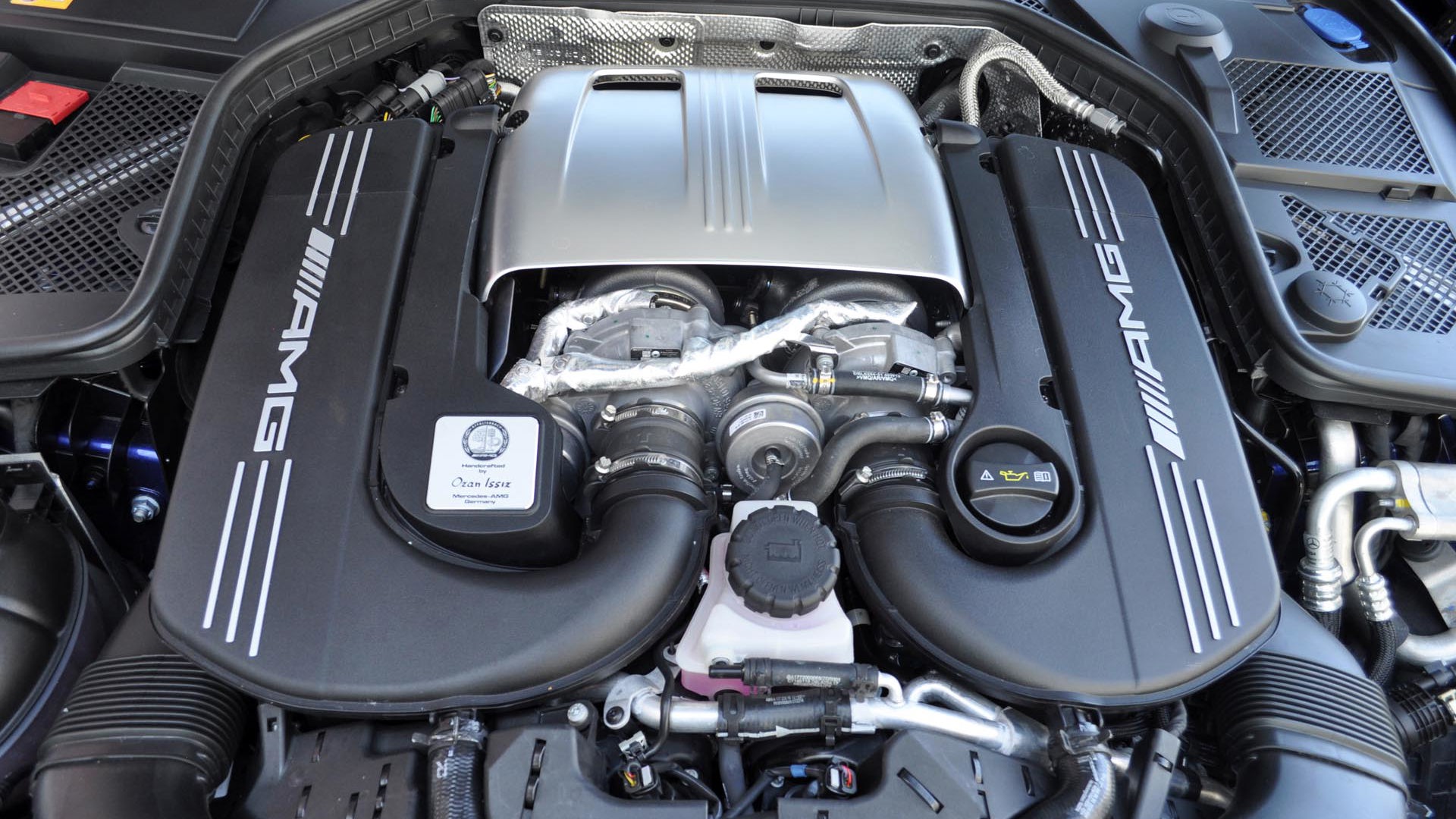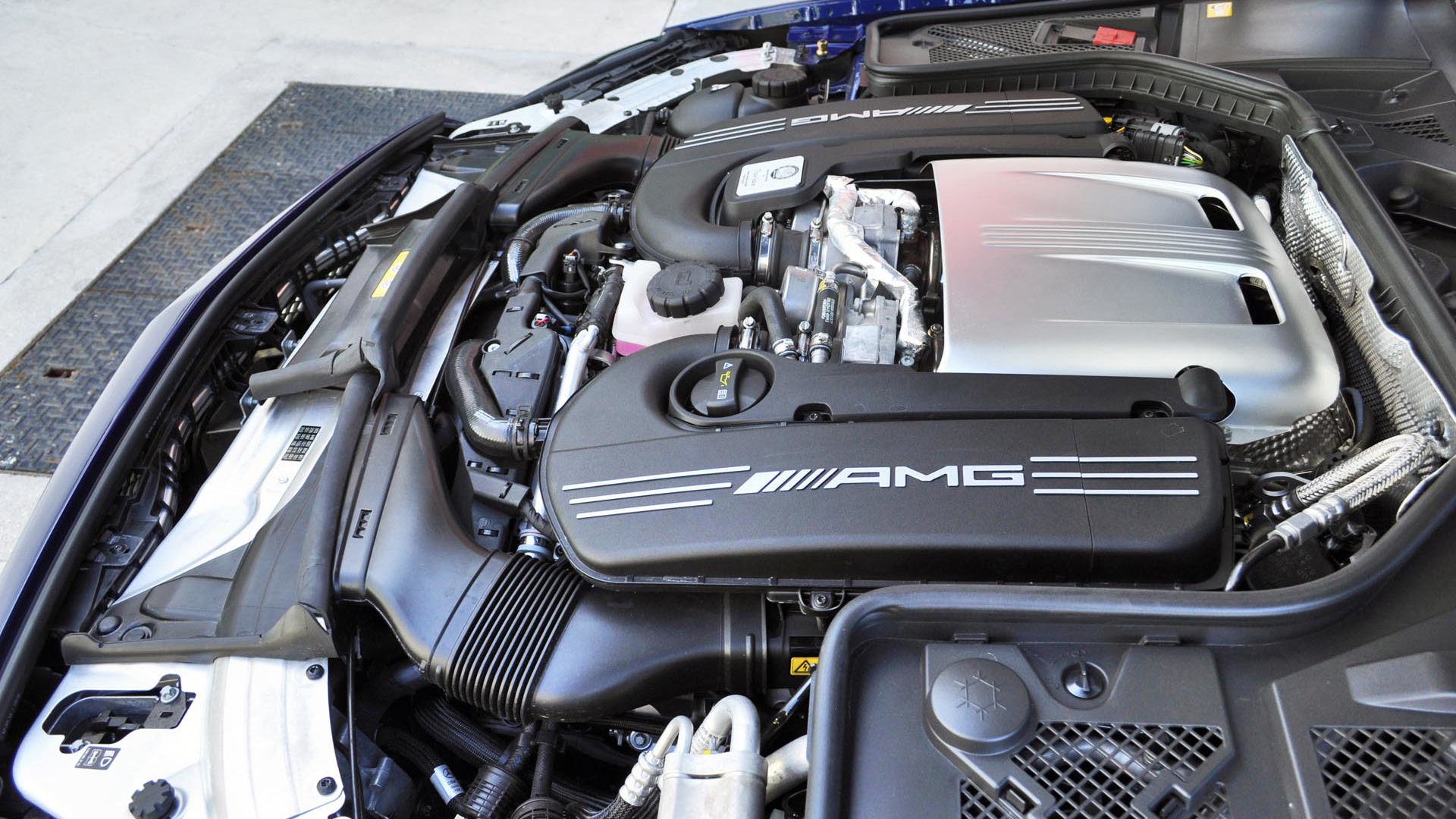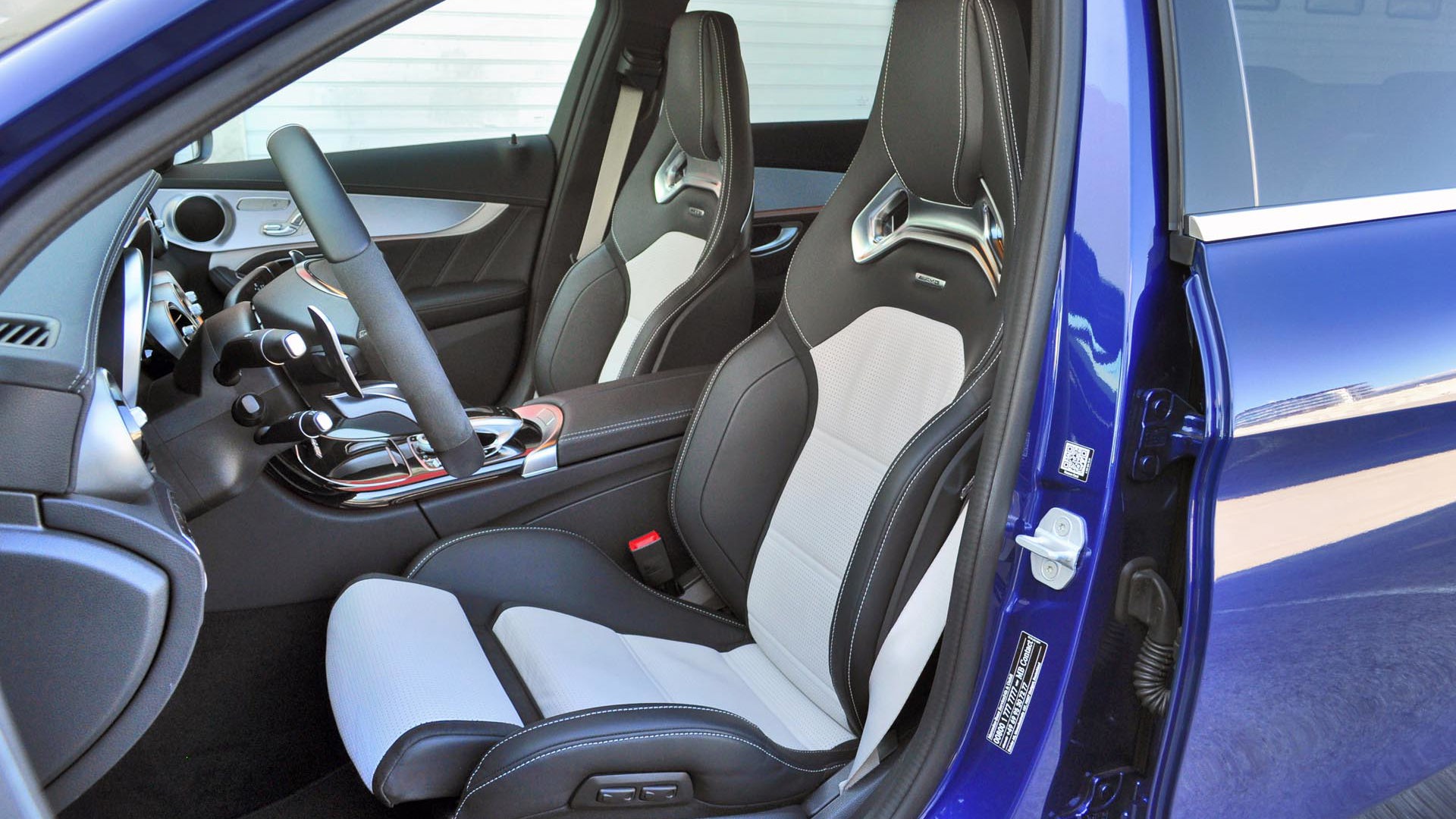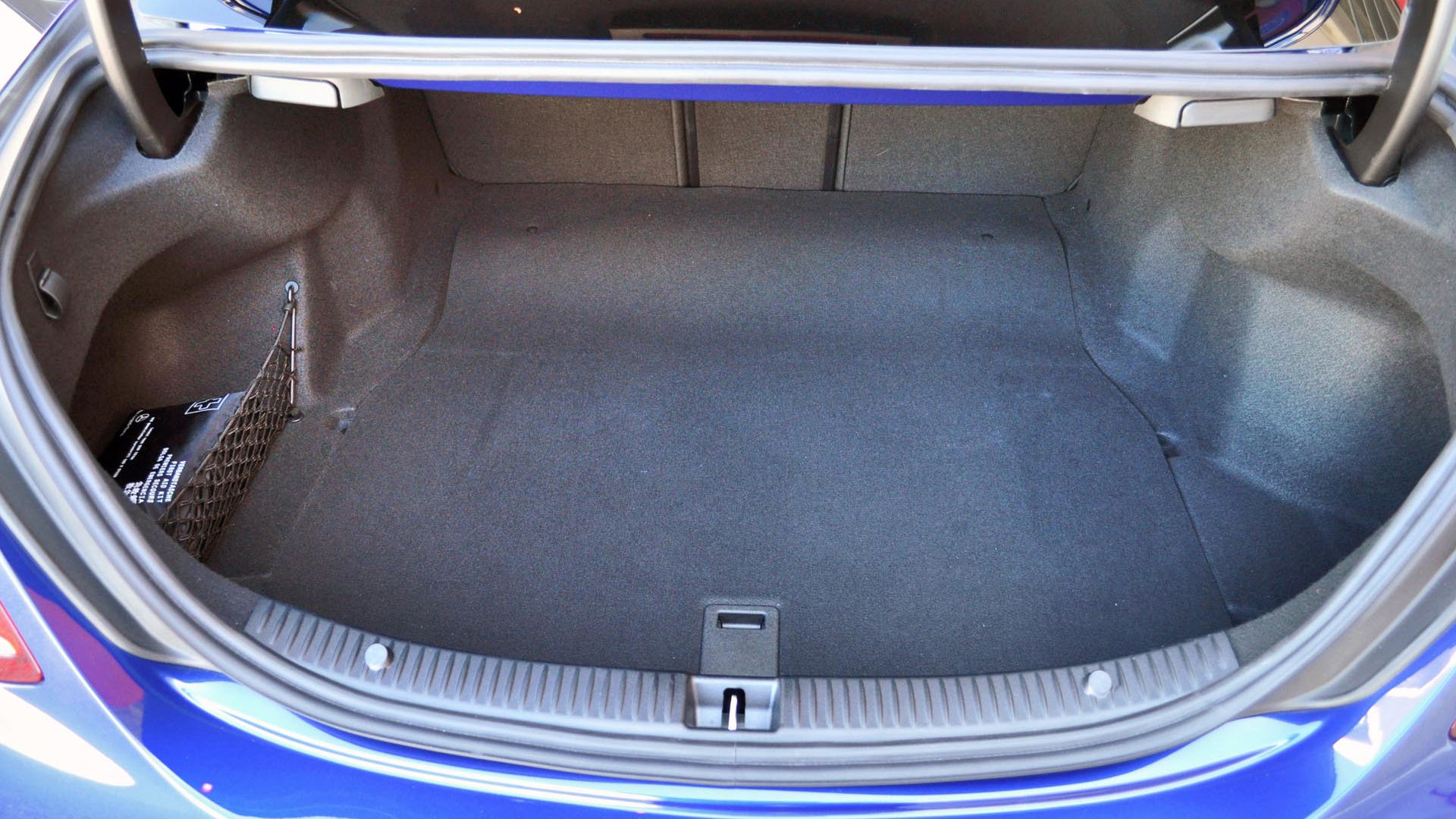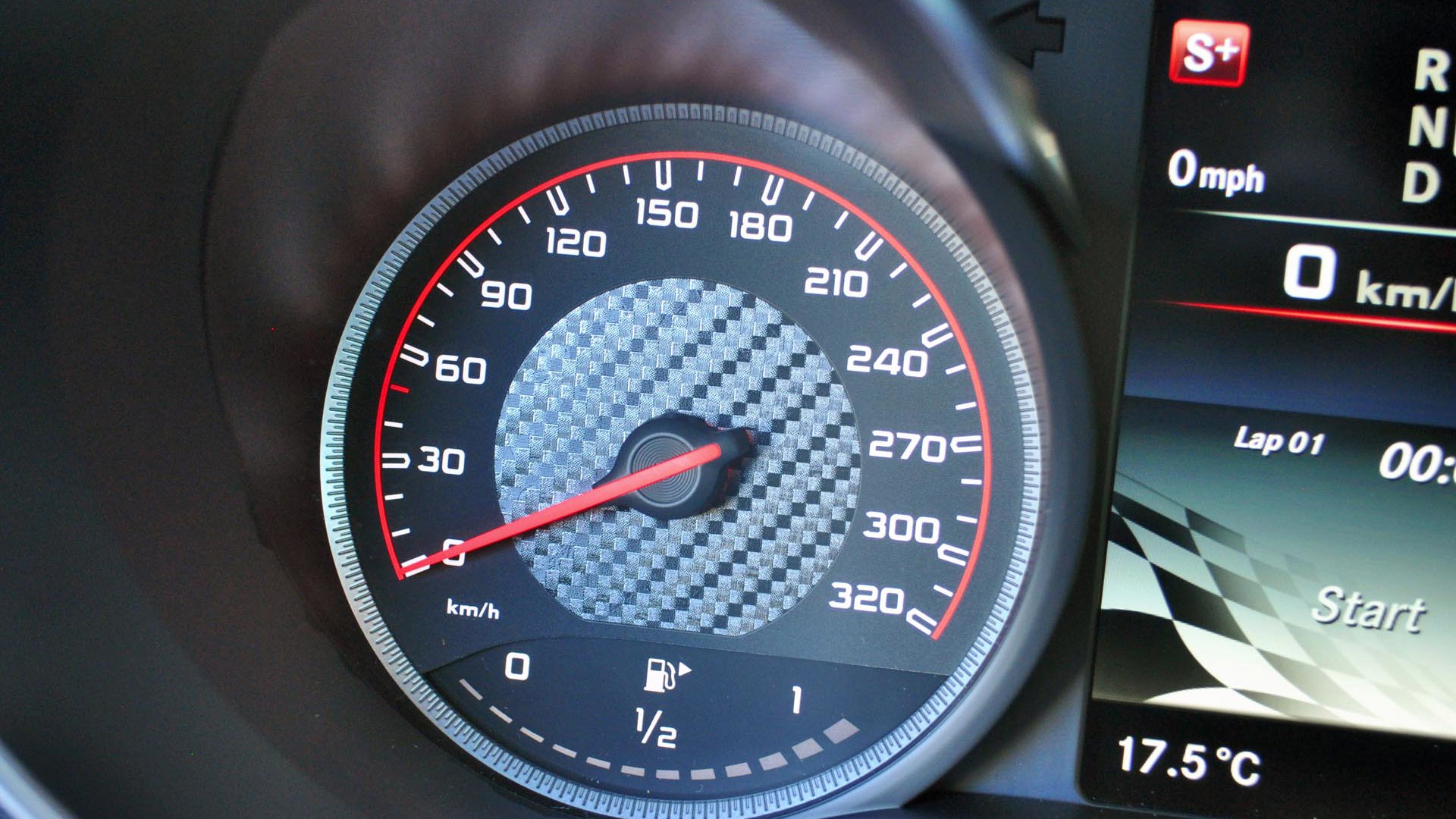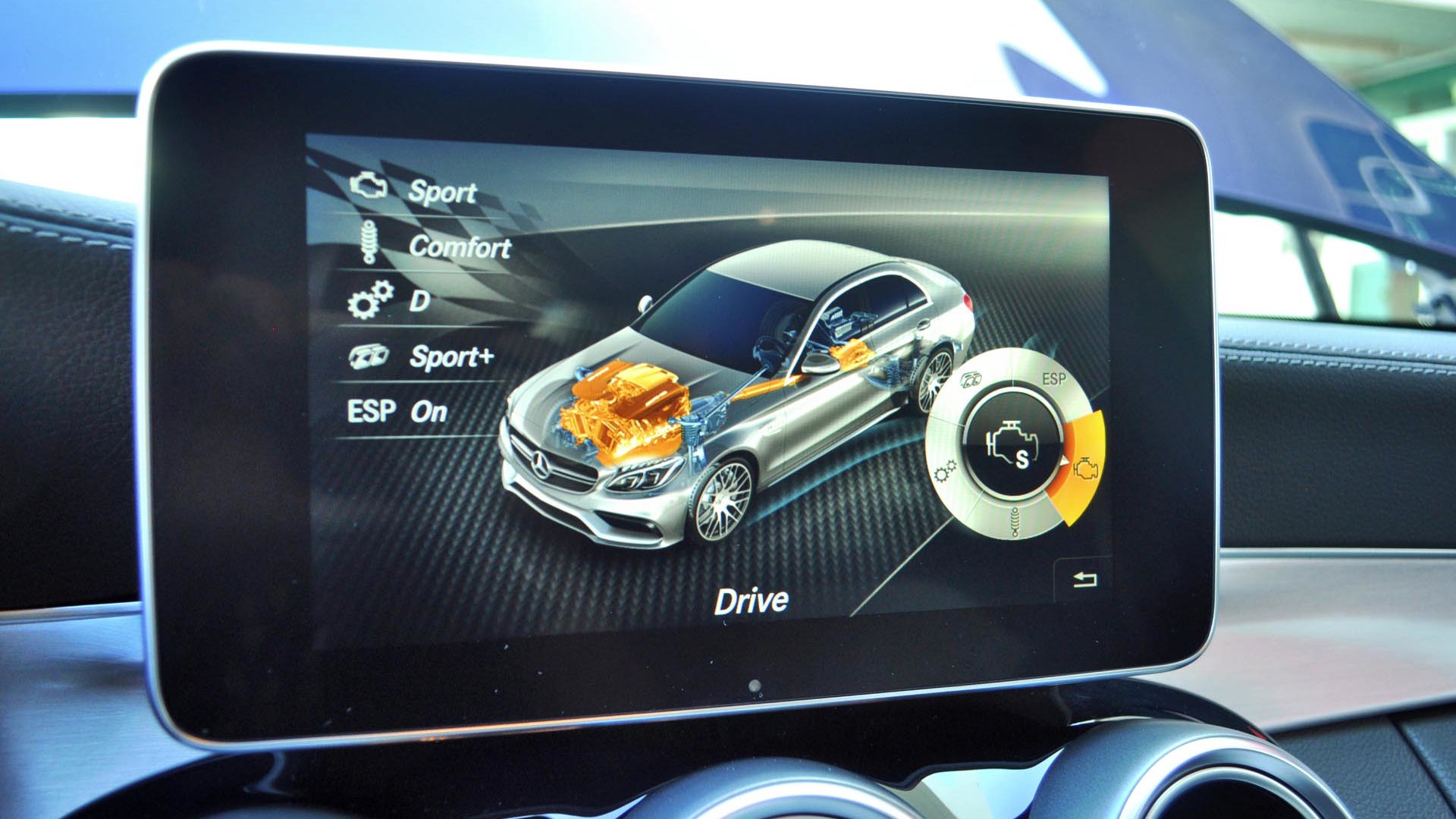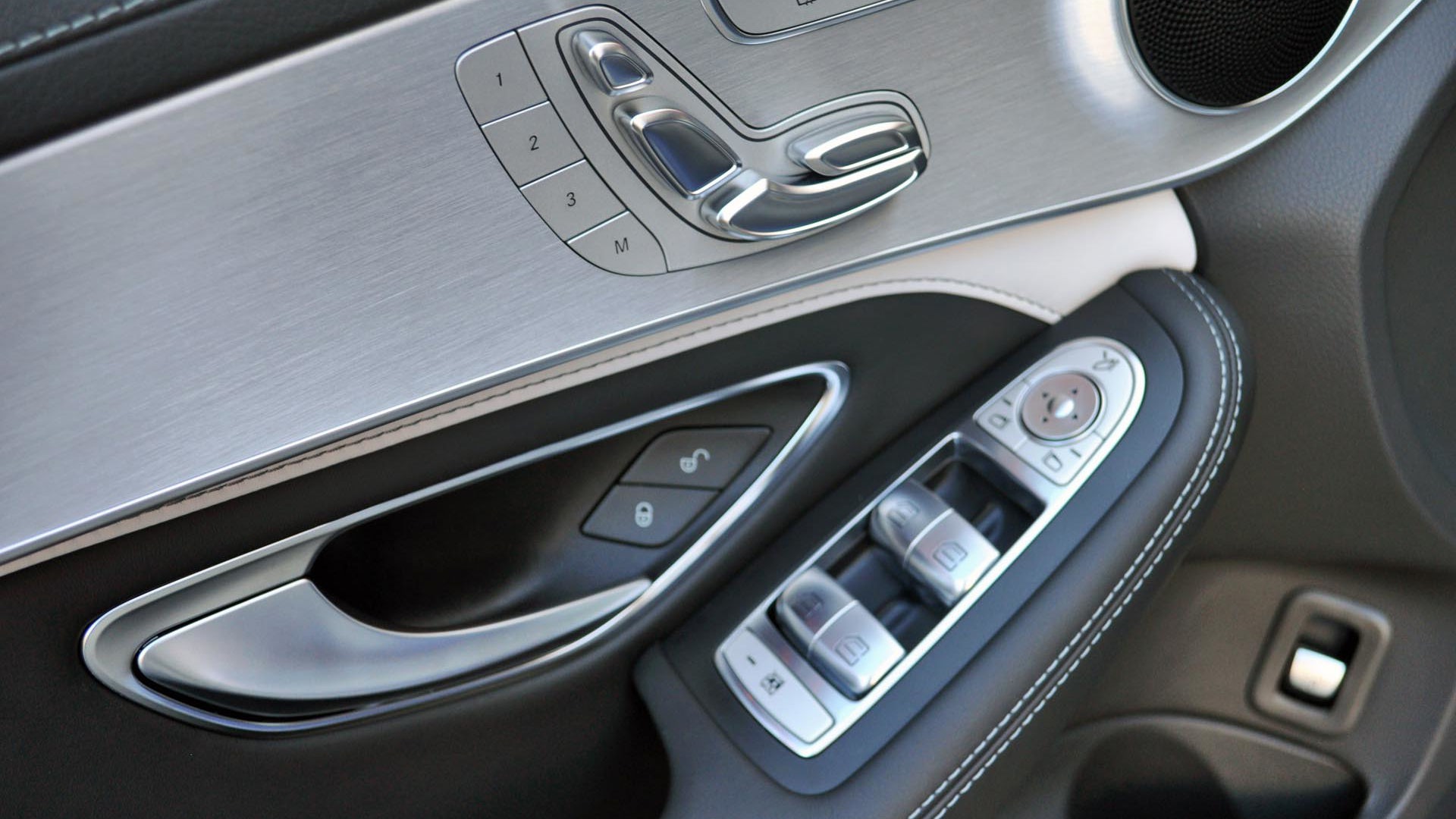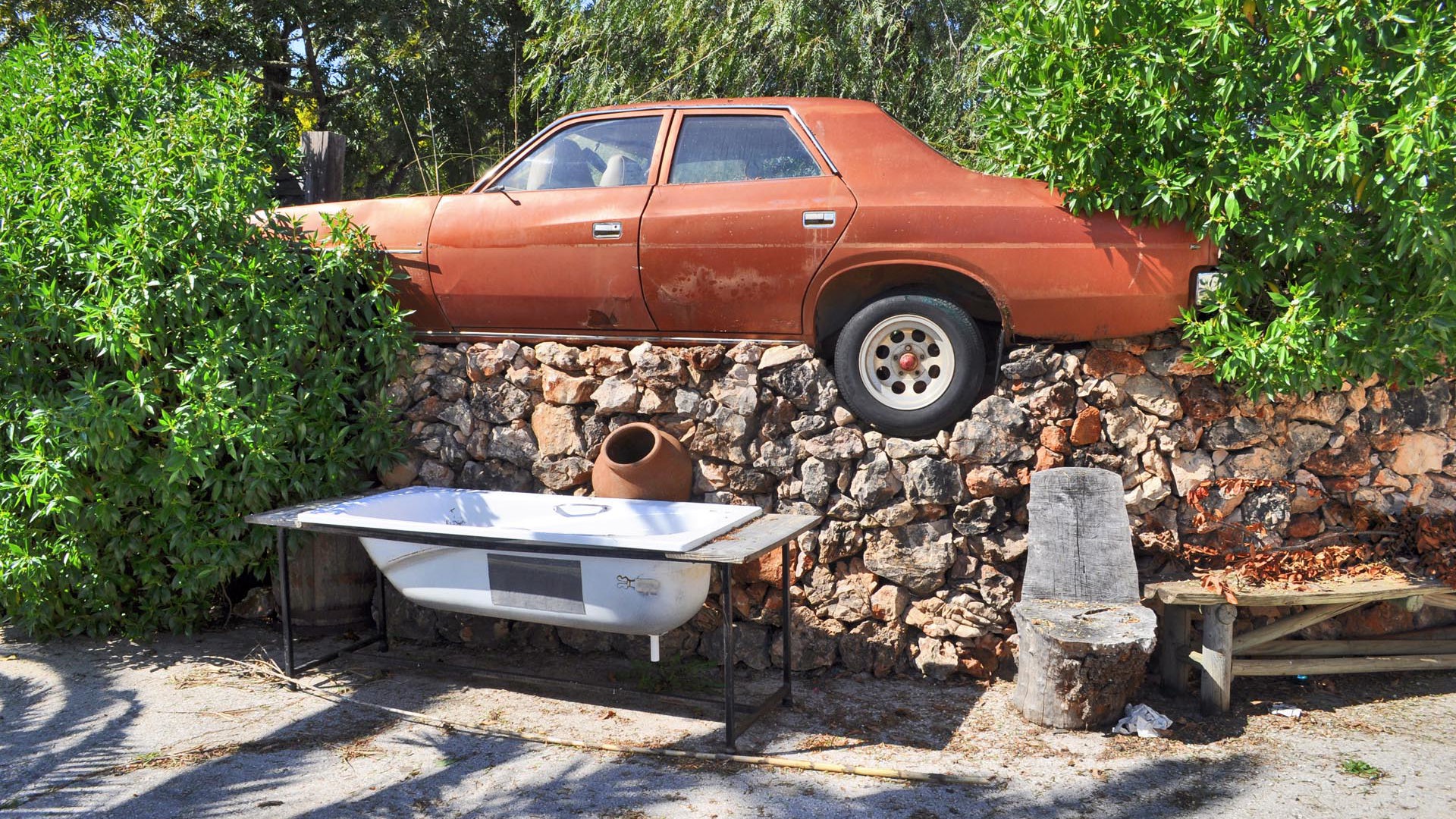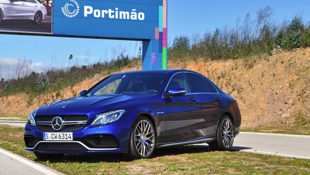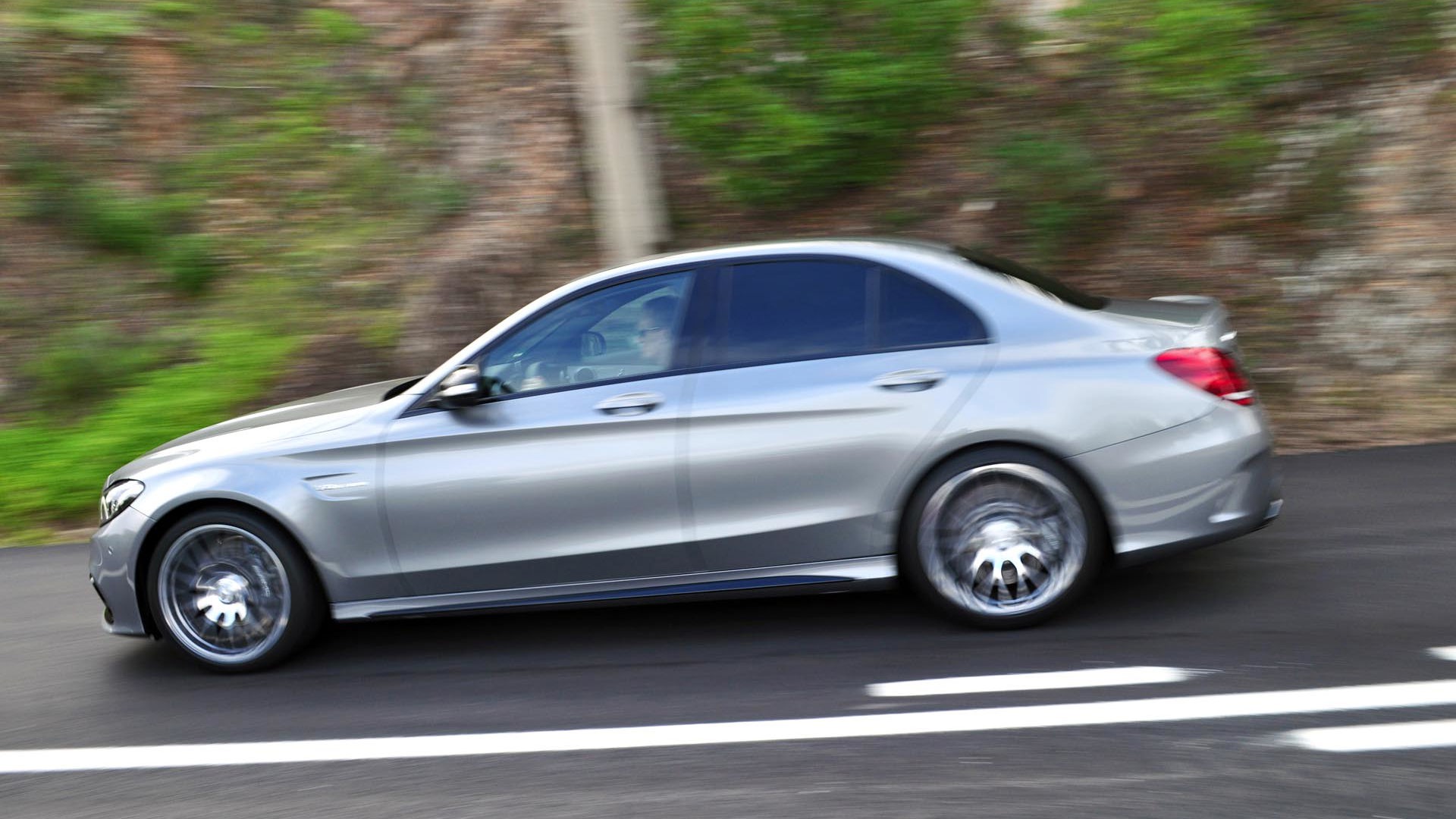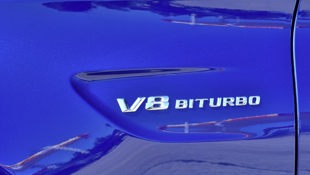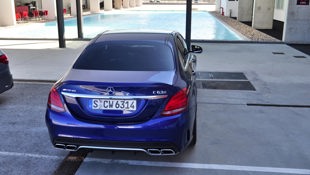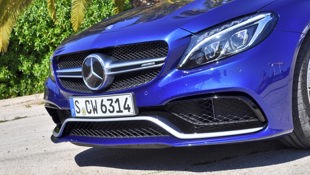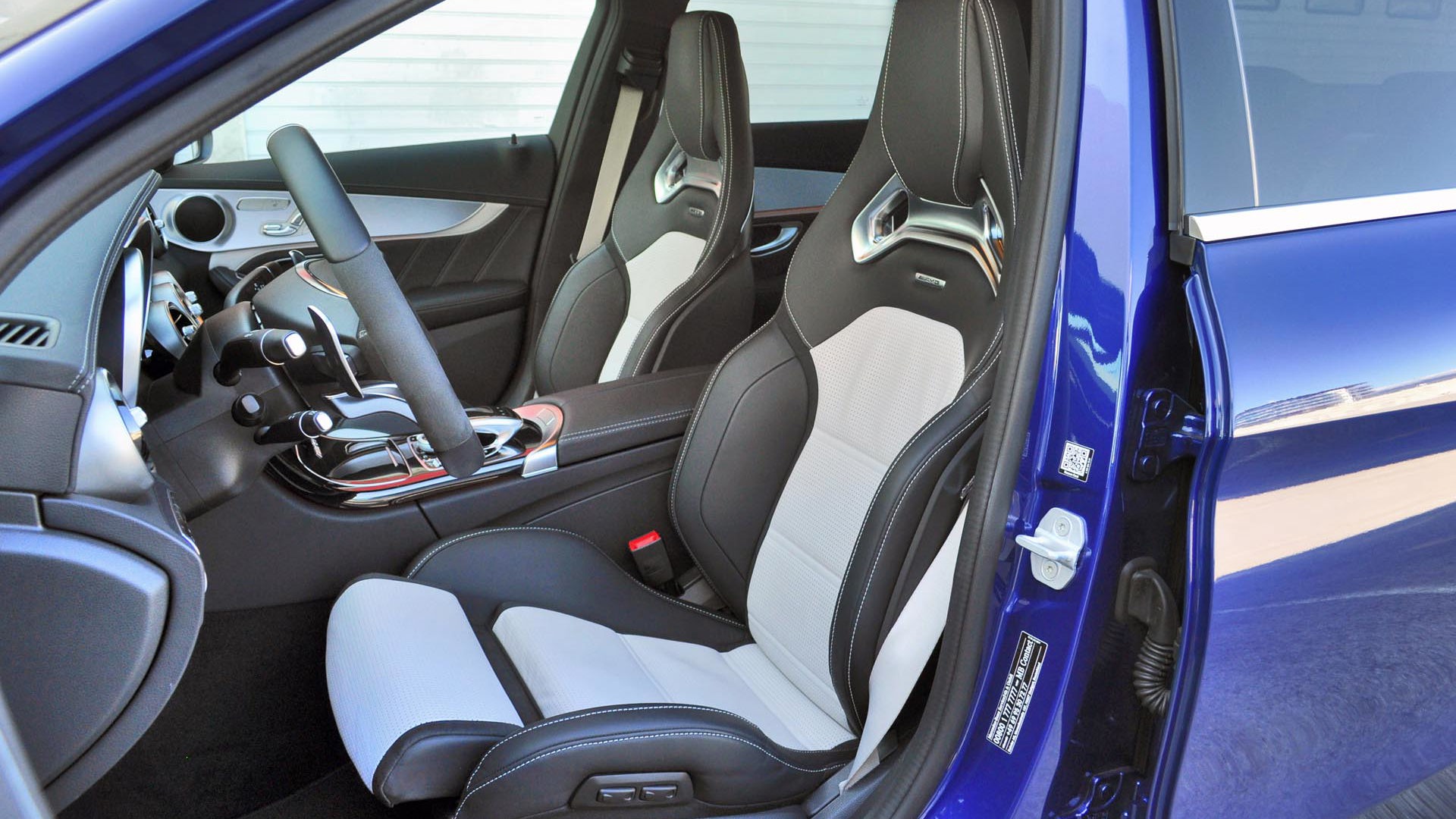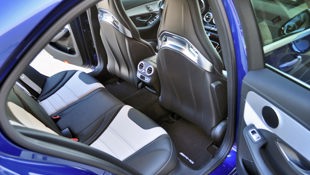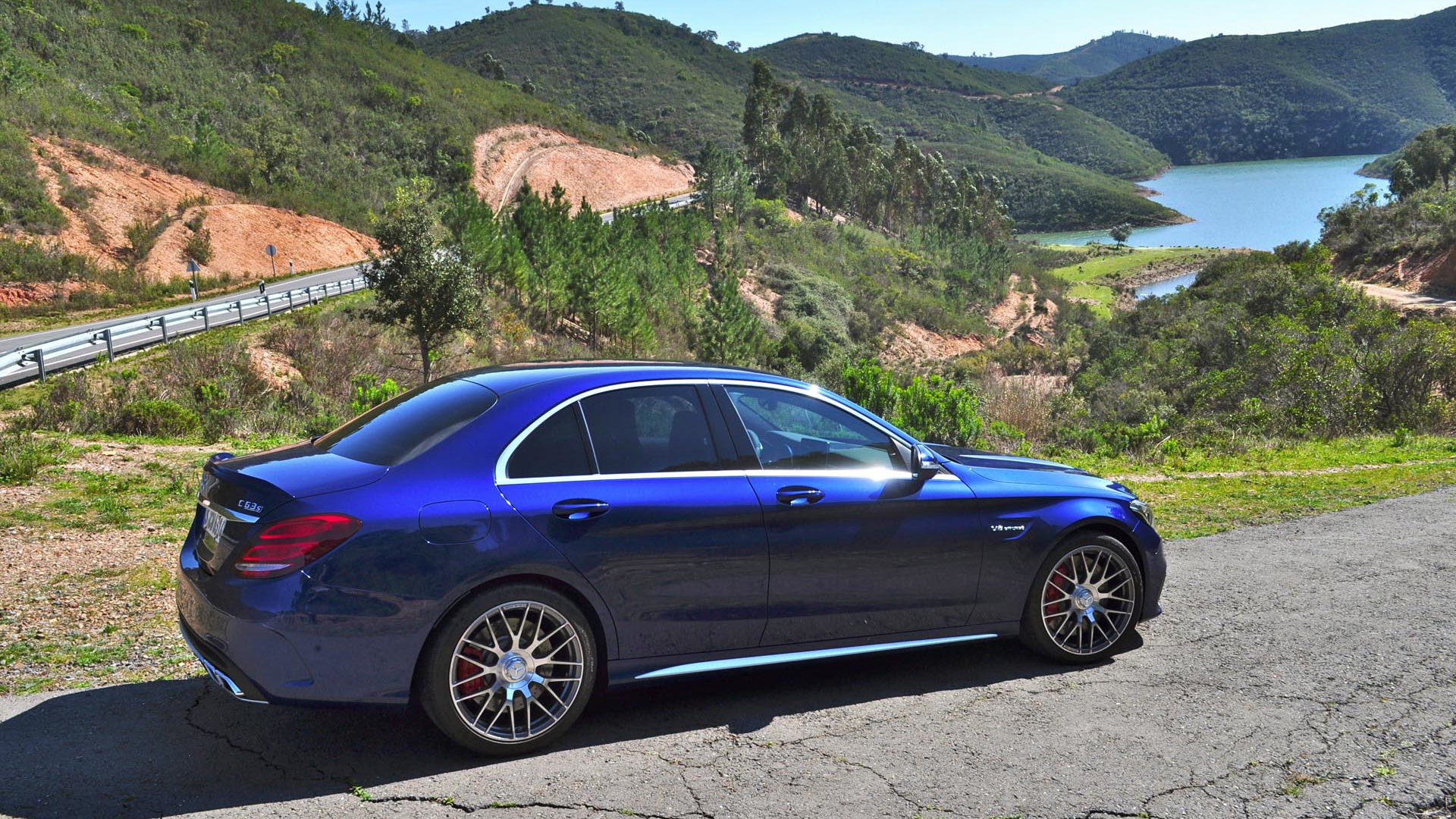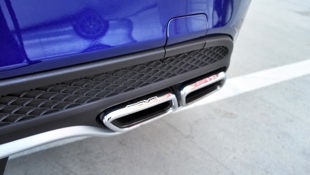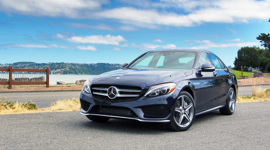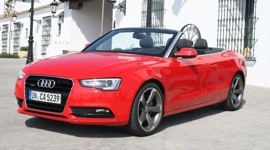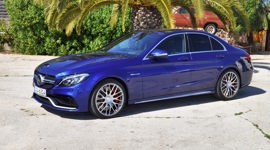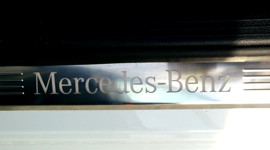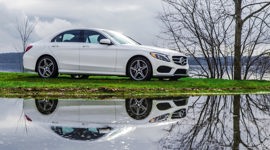Portimao, Portugal – At the turn of the calendar to 2015, there was a bit of a lull in compact luxury sport sedan competition in Canada: the Mercedes-Benz C 63 AMG four-door took a sabbatical for the last half of 2014, the Lexus IS F recently departed the market, the announced Cadillac ATS-V won’t arrive until April, and the Audi S4 and Volvo S60 Polestar are both sizable performance notches below the long-time reigning champ in this segment, the BMW M3.
As such, the all-new-last year M3 is now the de facto target in this “pace, grace with four-door space” segment. Perhaps even moreso than usual, given that it’s the only one in its competitive set to offer more than 400 horsepower, a level attained despite BMW sizing down its M3 from a full-bore 4.0L V8 to a more efficient and politically correct turbocharged inline-six. With 425 hp, the BMW M3 is currently the undisputed power champ in this class.
That is, until the all-new 2015 Mercedes-AMG C 63 arrives in Mercedes-Benz showrooms later this month, or early in April.
Yes, they’re still labeling it a 2015 model, despite its spring 2015 arrival, and will now expand the line to include a more track-ready S version as well as the regular C 63 AMG. The outgoing C 63 AMG sold over 40,000 units globally, making it the best-selling AMG model of all time, using a formula that dropped one of AMG’s largest engines into one of Mercedes-Benz’s lightest bodies available in North America at the time. That success wasn’t enough to maintain the entire name as is, as you’ll note that this C 63 is no longer a Mercedes-Benz model, but a new Mercedes-AMG model.
Slightly new name, and new C 63 S model
Mercedes-AMG will now be the new moniker for serious AMG performance machines, while the AMG name after the usual letter and three-digit model designation (i.e., the upcoming C 450 AMG) will denote versions with AMG tweaks, but not the most ambitious or comprehensive sporting mods. These AMG models will battle with BMW M Sport, Lexus F-Sport and Audi S-line models, among others, with Mercedes-Benz no doubt hoping mightily that the proliferation of AMG models of differing sporting temperatures does not overly confuse its customers, or dilute the sporting cachet of AMG models. Feel free to discuss amongst yourselves in the comments.
Maintaining those performance credentials shouldn’t be an issue with the new C 63, since it will offer the monster engine of the class, in horsepower, torque and cylinder count, if that latter measurement means anything in this era of boosted engines by turbocharger, supercharger or hybrid electrification.
By sticking with a V8 while others have largely switched to blown sixes or fours in their top-line compact sport sedans, the C 63 now offers a class-leading 469 hp, and 479 lb-ft of torque. The C 63 S model bumps up these figures by 34 and 37 respectively, landing at 503 hp and a gob-smacking 516 lb-ft of torque, thanks to an engine based closely on the one in Mercedes-AMG’s much pricier new GT sports car.
Proving this performance dominance was also the main reason to bring us to the Portimao race circuit in Portugal, instead of just driving around the sun-drenched, twisty roads that surround this track in southern Portugal’s tourist-friendly Algarve region. The new C 63 S was the provided track weapon of choice, because it offers performance goodies unavailable on the regular C 63, such as the optional six-piston carbon-ceramic brakes, with massive 402 millimetre slotted and vented discs up front (but not carbon composite in the rear), a unique Race mode in the AMG Dynamic Select toggle switch on the centre console that adjusts throttle response, shift points, and shift speed, plus a magically re-zapped electronically controlled top speed limiter that raises your track Vmax to 290 km/h from the C 63’s 250 km/h electronic limit.
The C 63 S is no straight line ‘sledgehammer’
In the pit lane, the C 63 S is fairly comfortable, without mountainous side bolsters to climb over that then suck you into the seat. Even with a helmet and a balaclava separating our ears from engine noise, the first major drop of the throttle brings about a flurry of thunder from its bellowing V8. That was in Race mode, which loudly liberated the muffler from much of its sound-muffling duties, thanks to the AMG Sport Exhaust that comes standard on the S, optional on regular C 63 models.
Acceleration from the twin-turbocharged 4.0-litre V8 is simply monstrous, especially from a machine that’s so docile and relatively comfortable while cruising on the highway. Mercedes-Benz says that the S can nail the 0-100 km/h sprint in 3.9 seconds, likely using the dual-clutch seven-speed automatic’s Race Start function, while the C 63 is just a whisker behind at 4.0 seconds flat.
It’s not the astonishing ‘instant on’ alien time warp of a pricier Tesla P85D, but both those times are just a hair quicker than the 4.1-second time BMW quotes for its M3.
Assuming all of these times are accurate, would these fractions of a second or much higher top speed be difference makers to potential owners? Likely yes for those into all-out revs-to-the-wall hot-lapping, but even in the real world, it’s hard to imagine one wouldn’t notice and appreciate the extra 78 hp and 110 lb-ft of pull afforded by a C 63 S over an M3. This makes the new Mercedes-AMG C 63 the undisputed power king of the compact sport sedans, even though the latter does weigh 99 kg more than the lighter BMW’s 1,631kg.
But unlike past AMG powerhouses, the C 63 S is not just a straight-line sledgehammer that somewhat falls apart in the corners. Yes, there was some wiggle under hard braking from 240+ km/h at the end of the back straight, but those wider rear tires (265 mm, versus 245s in the front) clung to the pavement like a forlorn groupie on the last day of the tour, with very little body roll in that stiffest suspension setting.
That Race mode doesn’t deactivate the stability control entirely, and entertainingly it allows a fair amount of slip angle before it intervenes to correct a slide. Although we were glad it was there in the end, there’s a certain abruptness at the safety cutoff point that some other automakers have managed to smooth over in such performance-oriented stability systems recently.
Road manners still a comfy compromise
So how does Mercedes-AMG’s newest four-door handle the real world? However the driver wants, largely. With five drive modes available, we largely toggled from Comfort and Sport on the regular bits, then the noticeably more aggressive Sport+ on the twistier bits of road. Having experienced the Race mode as intended on a track, we didn’t play with that or the Eco mode much at all. Eco mode kicks in the Start/Stop system and lowers the power consumption of the climate control system.
The Comfort mode is particularly impressive in town, because outside of a few raised crossings that occasionally produced a sharp thump to passenger backsides, those super-low-profile 19-inch wheels did not punish occupants much more than the less extreme C 450 AMG we also tried on the smooth streets of southern Portugal. Granted, both those cars may feel super-hard by the time they have to deal with frost-heaved potholes back home at minus 20 instead of plus 20 degrees, but it seems clear that even the most performance-oriented S model still has a healthy layer of civility.
That level of sophistication is reflected on the rest of the top C’s interior as well. The flat-bottom steering wheel may be losing some of its distinctiveness, now that cars as low on the sporting totem pole as the Honda Fit offer them. But there’s no denying the restrained yet sporty elegance of the optional contrasting two-toned leather seat inserts and matching top-dead-centre mark on our tester’s same steering wheel.
Of course, there’s no clearer sign of this car’s sporting competencies than that 320 km/h speedo.
Like any new generation Mercedes, and especially this latest redesigned C-Class model that debuted for 2015, there’s some impressive technology inside. The handrest just above its centre controller is now a palm-sized mini-tablet, with touch sensitivity that can read your handwritten letters or numbers, which is handy for spelling out a navi destination – especially if your significant other is left-handed.
The seven-speed transmission can coast automatically in neutral to save fuel, and is smart enough to momentarily ‘lift’ the throttle even when your foot is buried to the floorboard. Paddle shifters behind the steering wheel can automatically rev match upon downshifts for smoother trail braking when you’re going into corners hot. There’s even a near autonomous automatic parking system that will spin the steering wheel for you to help you parallel park or back into a tight space at the mall, all without touching the steering wheel or your brakes, the latter of which was the toughest to trust in a few test parks in a nearby mall parking lot.
Safety-wise, the C-Class brings a host of technologies from its larger and pricier Benz siblings. This includes Collision Prevention Assist Plus, which will warn the driver with first visual and then audible warnings about a dangerous approach speed to the vehicle ahead, and then either boost the driver’s brake pressure if it’s not deemed strong enough or autonomously brake the vehicle to the point where it’ll avoid or mitigate the collision.
Mercedes-Benz hasn’t confirmed Canadian pricing on either C 63 yet, but with main rival BMW at $74,000 for a base M3, plus the ’14 C 63 AMG starting in the mid-$60K range before options, 2015 starting prices closer to $70k and $75k for the C 63 and C 63 S respectively seem a fair bet.
For that price, roughly, you’re receiving the king of power in this hugely powerful class, with all the practicality of a regular C-Class and its family-friendly 40/20/40 split-folding seats and sizable trunk. Perhaps most amazingly, if its overall combined fuel efficiency average of 8.2 L/100 km on the optimistic European ratings scale holds up, the more powerful twin-turbo V8 C 63 S is still amazingly rated as more efficient than the single turbo six in the latest M3, which achieves a low of 8.3 on the same scale.
And in this business, there aren’t many power kings that don’t drink heavily.
| Competitors: Audi S4 BMW M3 Cadillac ATS-V Infiniti Q50 Eau Rouge Lexus RC F Volvo S60 Polestar |
